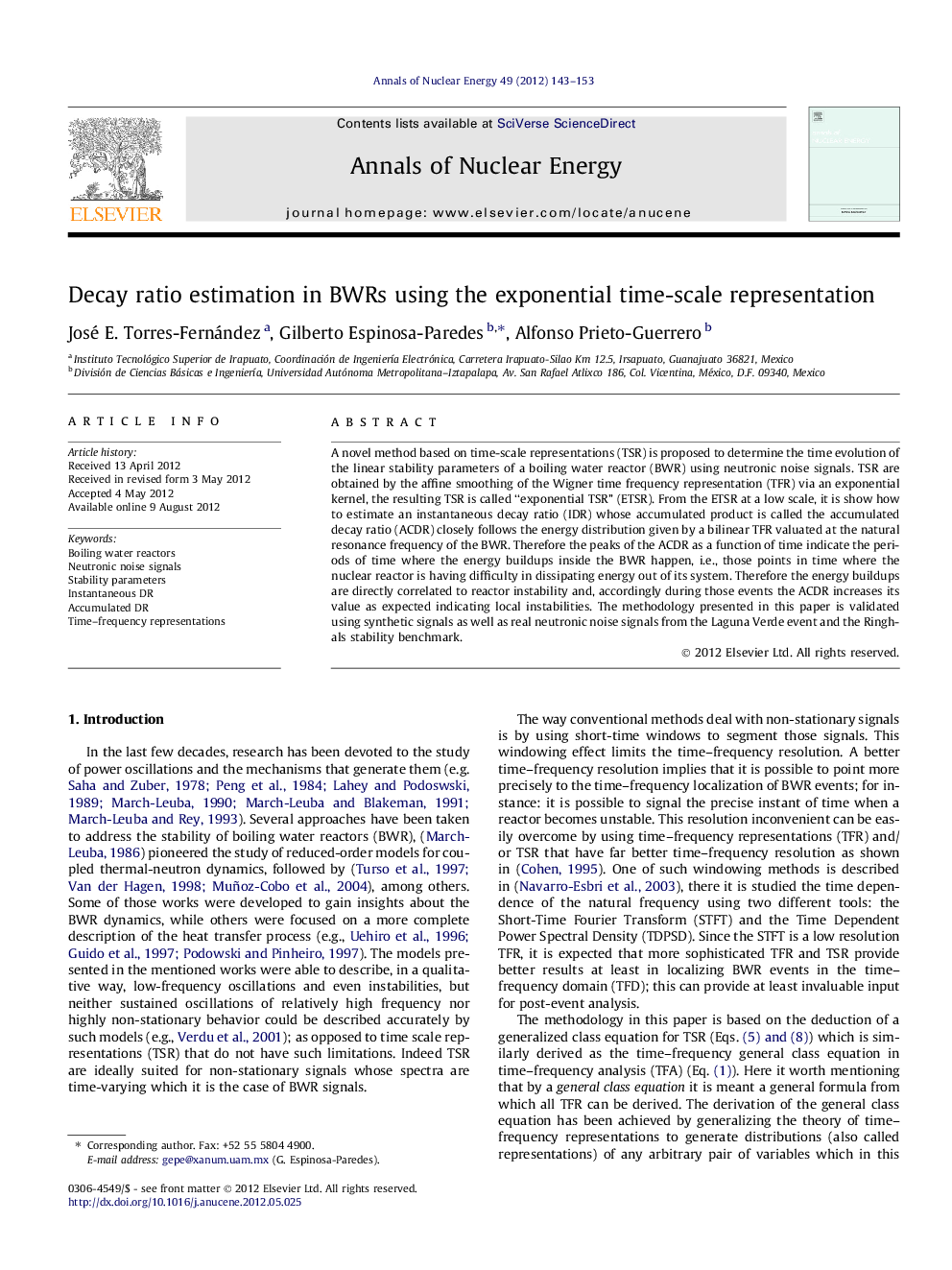| Article ID | Journal | Published Year | Pages | File Type |
|---|---|---|---|---|
| 1728855 | Annals of Nuclear Energy | 2012 | 11 Pages |
A novel method based on time-scale representations (TSR) is proposed to determine the time evolution of the linear stability parameters of a boiling water reactor (BWR) using neutronic noise signals. TSR are obtained by the affine smoothing of the Wigner time frequency representation (TFR) via an exponential kernel, the resulting TSR is called “exponential TSR” (ETSR). From the ETSR at a low scale, it is show how to estimate an instantaneous decay ratio (IDR) whose accumulated product is called the accumulated decay ratio (ACDR) closely follows the energy distribution given by a bilinear TFR valuated at the natural resonance frequency of the BWR. Therefore the peaks of the ACDR as a function of time indicate the periods of time where the energy buildups inside the BWR happen, i.e., those points in time where the nuclear reactor is having difficulty in dissipating energy out of its system. Therefore the energy buildups are directly correlated to reactor instability and, accordingly during those events the ACDR increases its value as expected indicating local instabilities. The methodology presented in this paper is validated using synthetic signals as well as real neutronic noise signals from the Laguna Verde event and the Ringhals stability benchmark.
► The ACDR measure reflects major long-term changes in BWR stability. ► The ACDR measure exhibits a series of interesting properties. ► The ACDR can detect long signal trends. ► The method was tested in Laguna Verde Unit 1 and the Ringhals stability benchmark.
